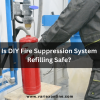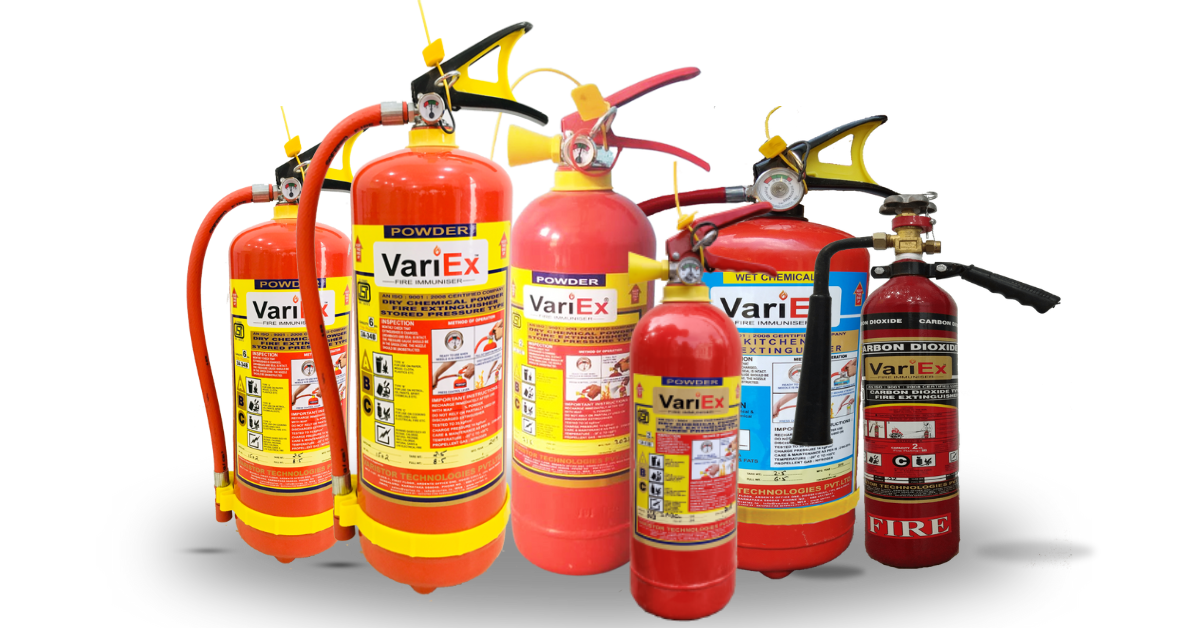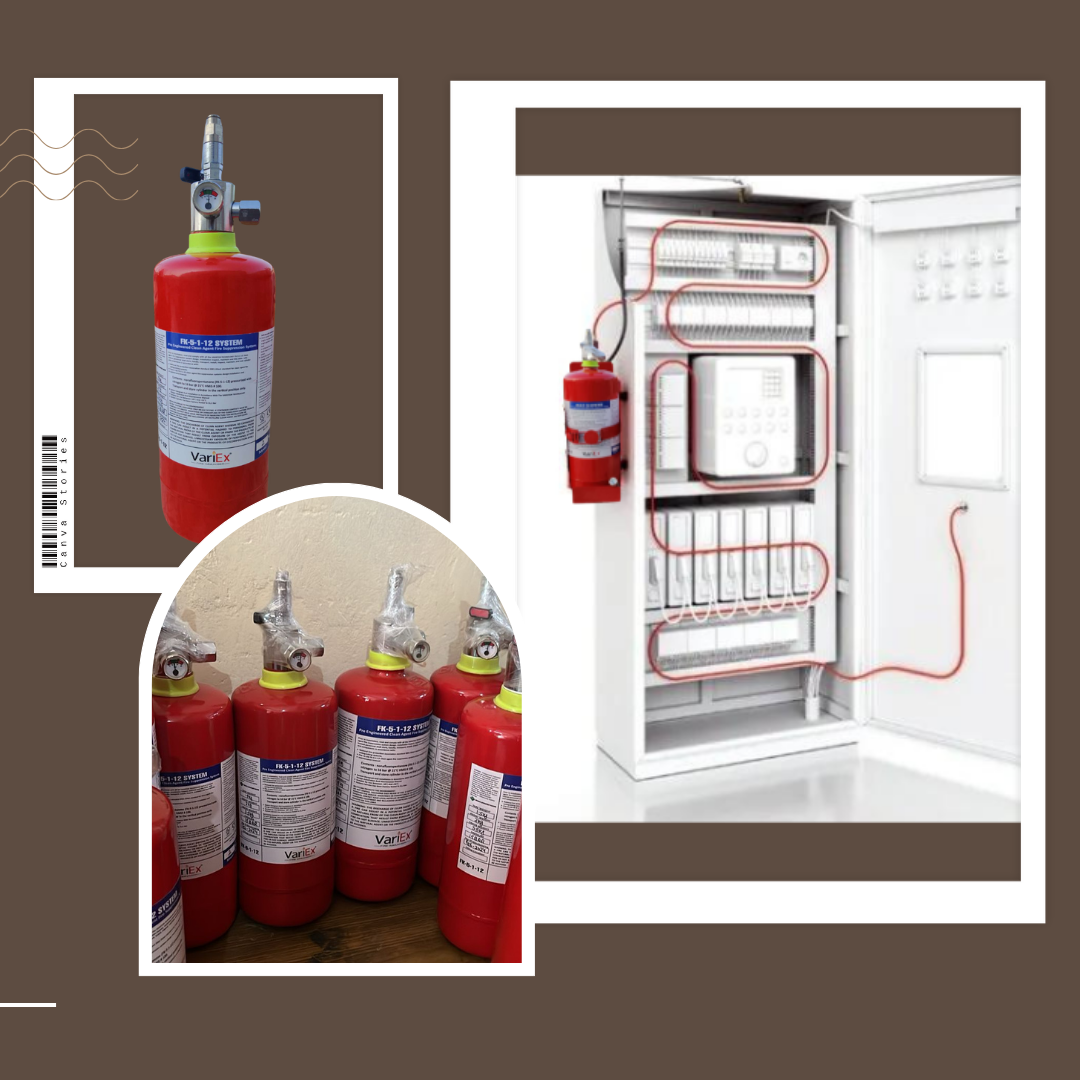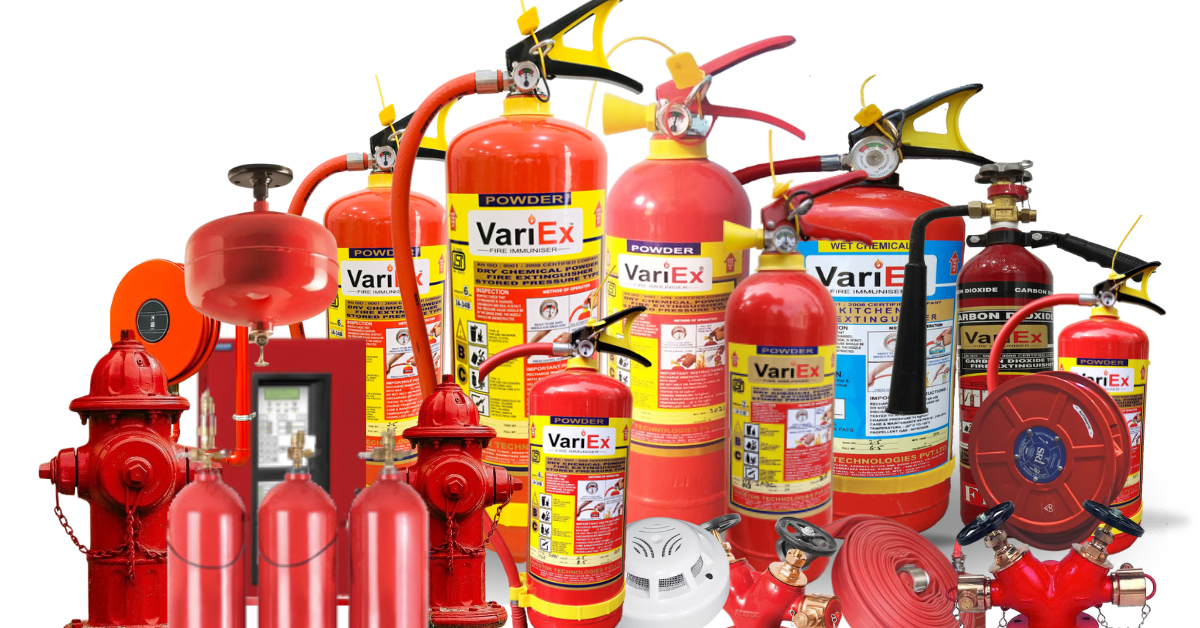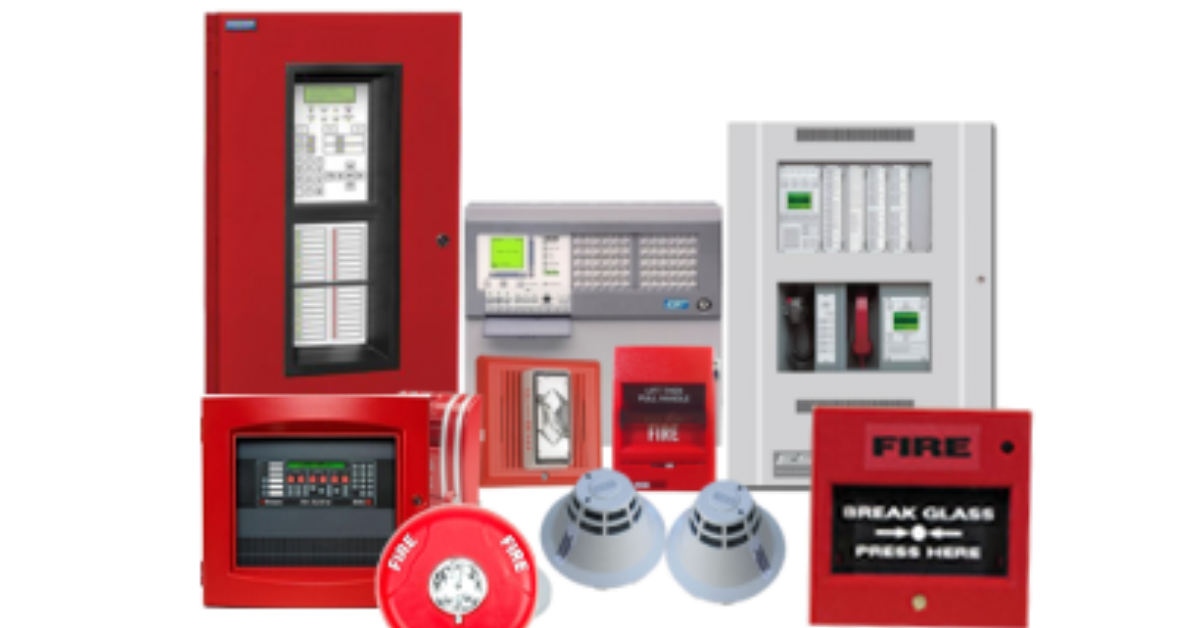![]()
Fire Immuniser
+91-7829629111
Email: info@variex.in
Varistor Technologies Pvt. Ltd.
Block-1, First Floor, Ardente Office One, Hoodi Circle, ITPL Main Road, Bengaluru, Karnataka 560048, IN
What Are The 4 Types Of Fire Protection Systems?
Fire protection systems are essential components of building safety, offering various methods to detect, suppress, and contain fires effectively. Understanding the intricacies of each system is vital for ensuring comprehensive fire safety measures. Let's delve deeper into the four main types of fire protection systems:
1. Fire Detection Systems: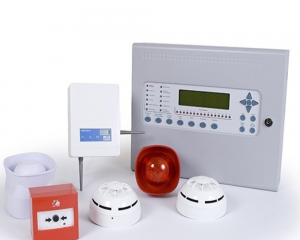
Fire detection systems serve as the first line of defense against fires by identifying their presence at the earliest possible stage. Here are the key components of fire detection systems:
Smoke Detectors: These devices are designed to sense the presence of smoke particles in the air. There are two main types of smoke detectors: ionization smoke detectors, which are more sensitive to flaming fires, and photoelectric smoke detectors, which are better at detecting smoldering fires.
Heat Detectors: Heat detectors activate when a specific temperature threshold is exceeded, indicating the presence of fire. Fixed temperature heat detectors respond to a constant temperature, while rate-of-rise heat detectors trigger alarms based on the rate at which the temperature increases.
Flame Detectors: Flame detectors use sensors to detect the presence of flames, providing additional confirmation of a fire event.
Fire Alarm Control Panels: These panels receive signals from detectors and activate audible and visual alarms to alert occupants to evacuate the building.
2. Fire Suppression Systems:
Fire suppression systems are designed to extinguish or control fires quickly and efficiently. Here's an in-depth look at the different types of fire suppression systems:
Sprinkler Systems: Sprinkler systems are the most common type of fire suppression system. They consist of a network of pipes with sprinkler heads installed throughout the building. When heat activates a sprinkler head, water is discharged onto the fire, suppressing its growth and preventing its spread.
Gaseous Suppression Systems: These systems use inert gases or chemical agents to extinguish fires by reducing the oxygen concentration or inhibiting the chemical reactions that sustain combustion. Gaseous suppression systems are commonly used in areas where water may cause damage to sensitive equipment or materials.
Foam Systems: Foam systems combine foam concentrate with water to create a foam blanket that suppresses flammable liquid fires. The foam smothers the flames and cools the fuel surface, preventing reignition.
3. Fire Extinguishers:
Fire extinguishers are portable devices that allow occupants to suppress small fires quickly. Here are the primary types of fire extinguishers and their applications:
- Water Extinguishers: Suitable for Class A fires involving ordinary combustibles such as wood, paper, and cloth.
- Dry Chemical Extinguishers: Effective for Class A, B, and C fires, involving flammable liquids, gases, and electrical equipment.
- CO2 Extinguishers: Ideal for Class B and C fires, as they displace oxygen and extinguish the fire without leaving residue.
- Foam Extinguishers: Suitable for Class A and B fires, as the foam creates a barrier between the fuel and the oxygen, extinguishing the fire.
4. Passive Fire Protection Systems:
Passive fire protection systems are designed to contain or slow the spread of fire and smoke within a building. Here's an overview of common passive fire protection measures:
- Fire-rated Doors and Partitions: These doors and partitions are constructed from fire-resistant materials and are designed to withstand the passage of fire and smoke for a specified period, allowing occupants to escape safely.
- Fire Dampers: Installed within HVAC ducts, fire dampers prevent the spread of fire and smoke through the building's ventilation system by closing automatically when triggered by heat.
- Fire-resistant Materials: Building materials such as fire-rated walls, ceilings, and floors provide additional protection against the spread of fire and smoke, compartmentalizing the building and limiting fire damage.
In summary, a combination of fire detection, suppression, extinguishing, and passive protection systems is essential for comprehensive fire safety in buildings. By understanding the functions and applications of each system, building owners and managers can implement effective fire protection measures tailored to their specific needs and risks.
Explore our products Range
Frequently Asked Questions
Fire protection systems are specialized equipment and measures designed to detect, suppress, and mitigate fires in buildings and facilities. They are essential for safeguarding lives, property, and assets by providing early detection and intervention during fire emergencies.
The main types of fire protection systems include fire detection systems (smoke detectors, heat detectors), fire suppression systems (sprinklers, gaseous suppression systems), fire extinguishers, and passive fire protection systems (fire-rated doors, fire dampers).
Fire detection systems use sensors to detect the presence of fire, smoke, or heat in a building. Smoke detectors, heat detectors, and flame detectors are common components that trigger alarms when signs of fire are detected.
Fire suppression systems are designed to extinguish or control various types of fires, including Class A (ordinary combustibles), Class B (flammable liquids and gases), and Class C (electrical fires). The type of suppression system selected depends on the specific fire hazards present.
Yes, fire extinguishers provide additional fire-fighting capability, especially for small fires or emergencies in specific areas where suppression systems may not be effective. They serve as a first line of defense before the fire department arrives.
Final Say
We at VariEx.in or Variexonline.com have mastered the art of designing, installing, inspecting, and fixing automatic sprinkler systems with the help of our in-house team, which is capable of delivering the fire sprinkler services you need, whether large or small and at affordable cost.
To schedule a fire sprinkler installation, or you think our services could benefit your commercial property, contact us online or give us a call at, 7829629111



